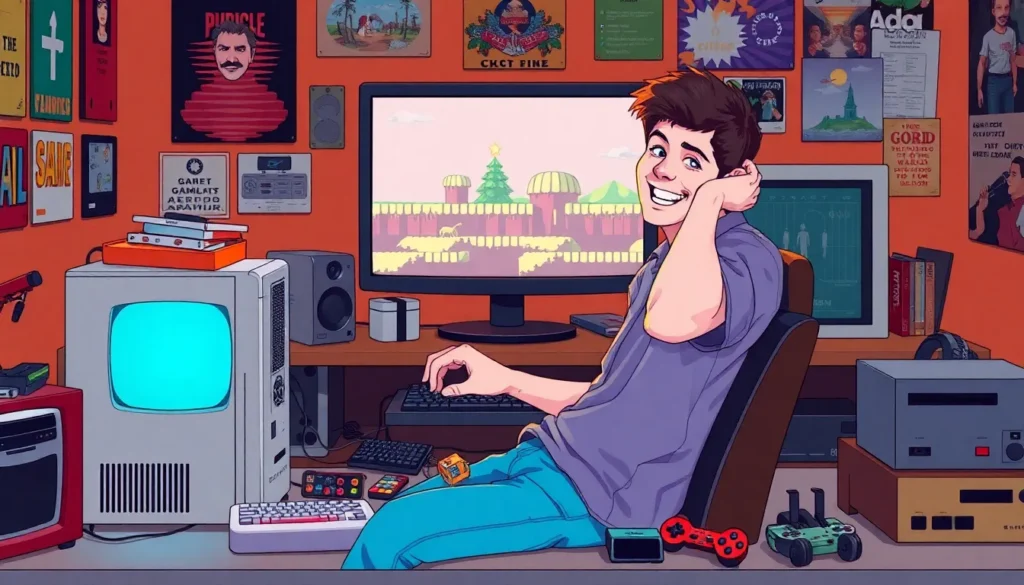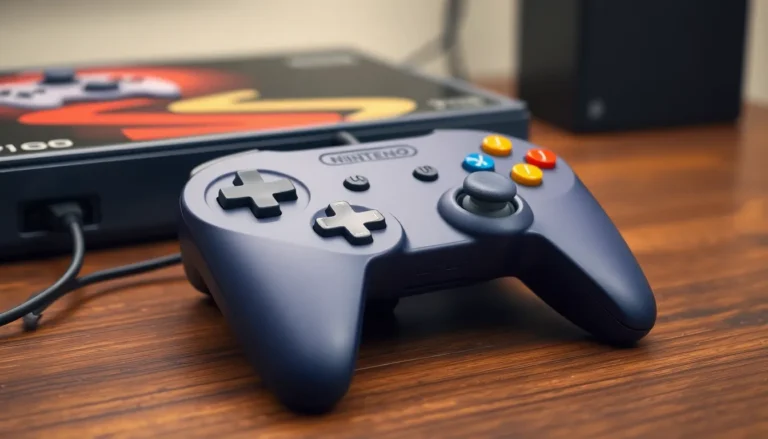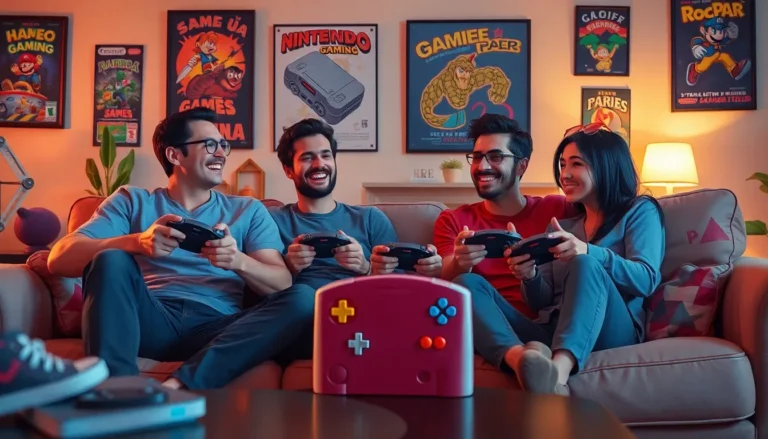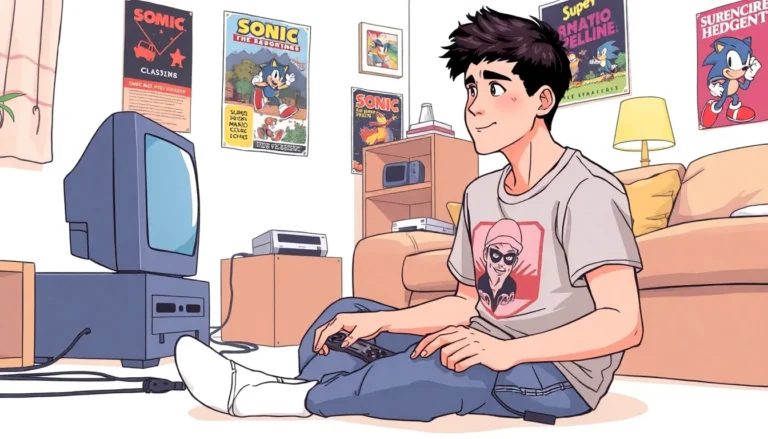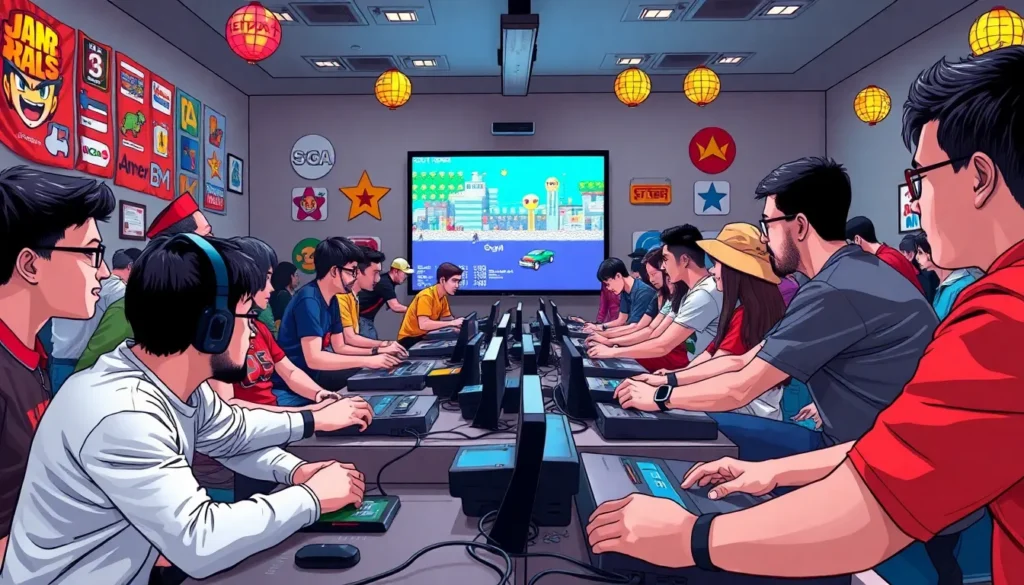In a world where graphics get sharper and games get more complex, there’s a growing love affair with the past. Retro gaming PCs are making a comeback, and it’s not just for those who remember the days of floppy disks and pixelated heroes. It’s for anyone who wants to relive the magic of classic games with a twist of modern convenience.
Imagine diving back into the pixelated realms of your childhood while enjoying the perks of today’s technology. From building your own nostalgic powerhouse to discovering hidden gems from the golden age of gaming, the retro gaming PC is the ultimate time machine. So dust off those old cartridges and prepare for a delightful trip down memory lane—because who wouldn’t want to save the princess with a side of nostalgia?
Table of Contents
ToggleWhat Is a Retro Gaming PC?
A retro gaming PC combines classic hardware and software to recreate the gaming experiences of earlier decades. It allows gamers to play titles from the 1980s and 1990s, offering access to beloved games designed for bygone systems. Enthusiasts often equip these PCs with vintage components, such as CRT monitors and original controllers, to enhance authenticity.
Significant preference for retro gaming stems from nostalgia. Gamers often cherish childhood memories of pixelated graphics and simple gameplay mechanics. Retro gaming PCs enable a seamless blend of old and new, as modern hardware supports older software with improved performance and graphics.
Many users opt to build their own retro gaming PCs. Doing so allows for customization according to personal preferences and performance needs. Classic operating systems, such as DOS or early Windows versions, frequently run alongside emulators for various consoles, making diverse game libraries accessible.
Such setups often include specific components that optimize performance while maintaining retro aesthetics. Popular choices for processors may include older Intel or AMD chips, while graphics cards can range from integrated solutions to discreet cards designed for handling retro titles. Memory and storage options vary, focusing on keeping things lightweight and efficient.
Ultimately, a retro gaming PC serves as a bridge connecting generations. It encourages users to rediscover forgotten favorites while sharing experiences with others. Gaming communities thrive around this trend, with forums and social media groups dedicated to this niche interest, fostering connections between old and new gamers.
Essential Components for Building a Retro Gaming PC
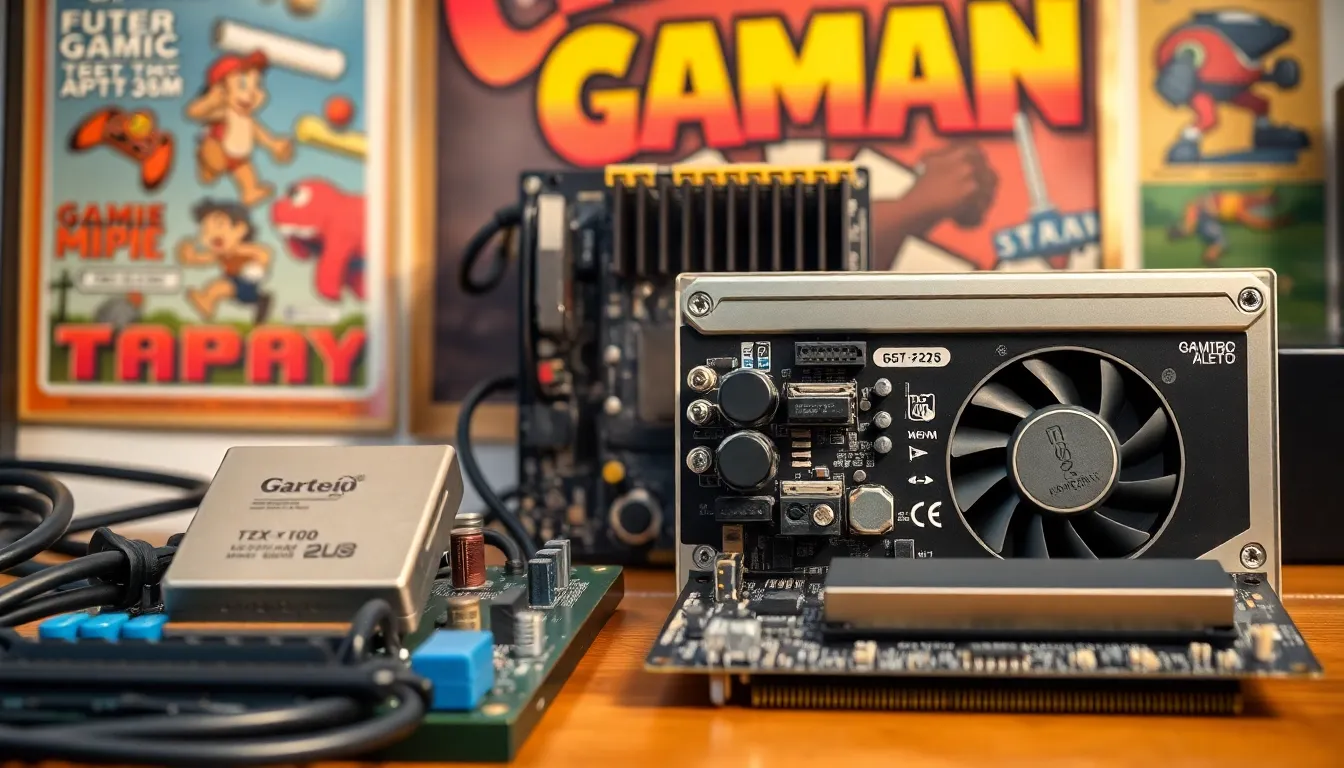
Building a retro gaming PC requires careful consideration of essential components that enhance performance and maintain retro aesthetics. Each part plays a critical role in creating an enjoyable gaming experience.
Choosing the Right CPU
Selecting a suitable CPU is fundamental for a retro gaming PC. Processors from brands like Intel and AMD offer various options that can handle older games with ease. Dual-core CPUs often perform well and provide enough power for classic titles. For maximum compatibility, consider models that support 32-bit operating systems, as many retro games were designed for older architectures. Researching benchmarks on legacy gaming performance helps ensure stable gameplay.
Selecting the Motherboard
The motherboard serves as the backbone of a retro gaming PC. Choosing a board that supports the selected CPU is crucial. Look for options with legacy connectors for peripherals, ensuring compatibility with older hardware. Form factors such as ATX or Micro ATX can influence your PC’s size. Prioritize motherboards with integrated sound options to minimize the need for additional components, streamlining the setup while still delivering excellent audio quality.
Graphics Card Options
Graphics cards significantly impact the visual quality of retro games. While many classic titles don’t require high-end GPUs, choosing a graphics card that balances power and authenticity enhances gameplay. Look for cards that support older resolutions and can run emulators effectively. Options like the NVIDIA GeForce GTX 750 or AMD Radeon RX 560 deliver great performance without overwhelming older titles. In addition, ensure the card has outputs compatible with your display, whether it’s a CRT monitor or a modern screen.
Operating Systems for Retro Gaming PCs
Selecting the right operating system is crucial for a successful retro gaming experience. Several options cater specifically to nostalgic gamers.
Popular OS Choices
Windows 10 remains a popular choice due to its compatibility with a wide range of classic games. Many users prefer it for its familiarity and support for legacy software. Linux distributions such as RetroPie and Lakka offer lightweight alternatives tailored for gaming. Both provide a simplified interface and access to emulators without demanding system resources. DOSBox also deserves mention for those wanting to run MS-DOS games seamlessly. These operating systems help users capture the essence of retro gaming while maintaining modern conveniences.
Emulation Software
Emulation software enables gamers to play classic titles on modern hardware. Popular solutions include ZSNES and SNES9x for Super Nintendo games. Others like ZDoom recreate the experience of classic first-person shooters. MAME, or Multiple Arcade Machine Emulator, allows access to a vast library of arcade games from various eras. Each emulator offers unique features that enhance gameplay, such as save states and graphic filters. Gamers frequently customize settings to improve performance and visual quality, allowing for a tailored gaming experience that retains retro charm.
Tips for Building Your Retro Gaming PC
Building a retro gaming PC combines creativity with technical skills. Enthusiasts often follow specific guidelines to ensure an optimal setup.
Best Practices for Assembly
Start with a clean workspace to prevent accidental damage to components. Prioritize the motherboard installation by securing it in the case first. Attach the CPU and cooler before placing the motherboard into the case. Organize cables neatly to allow for better airflow and easier troubleshooting. He or she should also use anti-static measures, like grounding themselves, to protect sensitive parts. Test each component before final assembly to ensure functionality. Install the operating system and emulators last, allowing for a streamlined setup process.
Recommended Tools
Gather essential tools for assembly. A Phillips-head screwdriver is a primary need for securing screws on the components and case. Anti-static wrist straps minimize the risk of electrostatic discharge. Cable ties help maintain organization within the case, enhancing airflow and aesthetics. Use a flashlight to inspect tight spaces for potential issues. Lastly, an external storage device or USB drive provides additional backup solutions for game files and software.
Retro gaming PCs offer a unique opportunity to experience the charm of classic gaming while embracing modern technology. They serve not only as a nostalgic trip down memory lane but also as a way to connect with a vibrant community of enthusiasts. By blending vintage components with current advancements, these setups provide both authenticity and performance.
Gamers are encouraged to explore the vast library of beloved titles and enjoy the simplicity of earlier gameplay mechanics. Whether building a custom rig or using emulation software, the joy of retro gaming lies in its ability to unite generations and reignite cherished memories. Embracing this trend allows players to celebrate the past while enjoying the innovations of the present.

